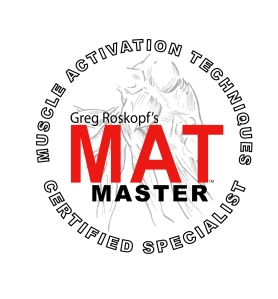 Muscular compensation is a common thing. We all “know” that if your knee starts to ache, it is probably from doing too much work, and we all “know” that this is a form of compensation. My question is, why is the compensation there in the first place? It seems that the word “compensation” is a scapegoat: “Oh well my knee must be compensating for something. I’ll just push through it.” Most of us accept that our knee compensation may be part of the aging process or a by-product of too much work. The truth of the matter is that if we addressed the muscular compensation at an early stage, your knee ache probably would never have manifested.
Muscular compensation is a common thing. We all “know” that if your knee starts to ache, it is probably from doing too much work, and we all “know” that this is a form of compensation. My question is, why is the compensation there in the first place? It seems that the word “compensation” is a scapegoat: “Oh well my knee must be compensating for something. I’ll just push through it.” Most of us accept that our knee compensation may be part of the aging process or a by-product of too much work. The truth of the matter is that if we addressed the muscular compensation at an early stage, your knee ache probably would never have manifested.
Do you tune up your bicycle every year? Do you take your car to the shop to get everything “checked-up” every once-in-a-while to prevent your car breaking down? If so, why don’t we do the same for our body? What would be perfect is if we had a human body mechanic, someone who could assess the quality of motion in our body and make sure that everything is working to the best of our abilities
Muscle Activation Techniques™(MAT), in its various forms (MAT Specialist and MAT Jumpstart), are just that – mechanics for the body! MAT specialists are masters of human mechanics, bones, and muscles. Their job is to use your joint motions to assess the quality of your neuromuscular system – the communication pathways between your nervous system and skeletal muscle. Your neuromuscular system will not allow your muscles to pull you into any positions that they are unable to control. If a muscle becomes stressed, it may inhibit its ability to contract as a defense mechanism. This gives the muscle an opportunity to do less work so it can begin its recovery process. We don’t generally feel a muscle inhibit itself, but what we do feel is the muscles around the inhibited muscles “tightening up” to restrict motion.
The most common method used to deal with “tightened up” muscles, is to stretch them out. Stretching allows you to push yourself into some positions that your body was not capable of before. That is good, right? How did your body allow you to reach that position? Stretching has been said to relax tight muscles. Most of us feel some relief from stretching “tight” muscles; the problem is we just determined that those tight muscles were there for a reason! We have now started to focus on addressing the symptoms, rather than address the source of the problem.
Muscle Activation Techniques™ is unique in that it addresses the source of the problem, the inhibited muscles. More often than not, once you stimulate the muscles that are not doing enough work, the tight muscles will relax and become “untaught”. Once all the muscles are working efficiently, the neuromuscular system may allow you to visit those positions that were restricted before. Now you can reach into the back seat of the car with ease. Aaahhhh, freedom!
Now what if I already have an achy knee? A quick and easy example of an achy knee is either on the outside or inside of the knee. Your doctor, or physical therapist, may label this sensation as a lateral or medial meniscus tear. Our meniscus is a very tough, durable piece of cartilage that is designed to act as a shock absorber between the end of your femoral condyles (bottom end of your femur) and tibial plateau (top part of your tibia). Essentially, it is designed to take a beating. So how the heck do you get a meniscus tear?
On the bottom end of each femur, we have menisci, a lateral meniscus and medial meniscus. Let’s imagine for a second that each meniscus should take 50% of the shock absorption load. That means that the menisci together are accounting for 100% of the load. Now, what happens if we have a muscular imbalance on one side of the knee? As a by-product, one of those menisci may start to take 60% of the load and in order to let the other only take 40%. The meniscus that is taking more load will obviously get beaten up a bit more and may give you that sensation of an ache. If you address the original muscular imbalance that was caused, this may actually decrease the pressure on the one meniscus and return it to its balanced state. The aches generally will decrease. If you manage the imbalance, you can actually create an environment that promotes healing!
The specialists at Strata Biomechanics want to be your mechanics! Let us introduce you to the amazing principles behind Muscle Activation Techniques™. The entire process is truly unique and remarkable. Contact us today for your initial Muscle Activation Technique™ assessment! Own every inch of motion!
Brandon J. Green – MATcs, RTSm, MAT Jumpstart

Again great article! Makes so much sense, great explination of why MAT is important.
Pingback: Why Muscle Activation Techniques? « Charleenesfitness's Blog